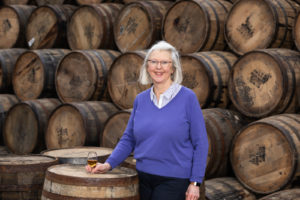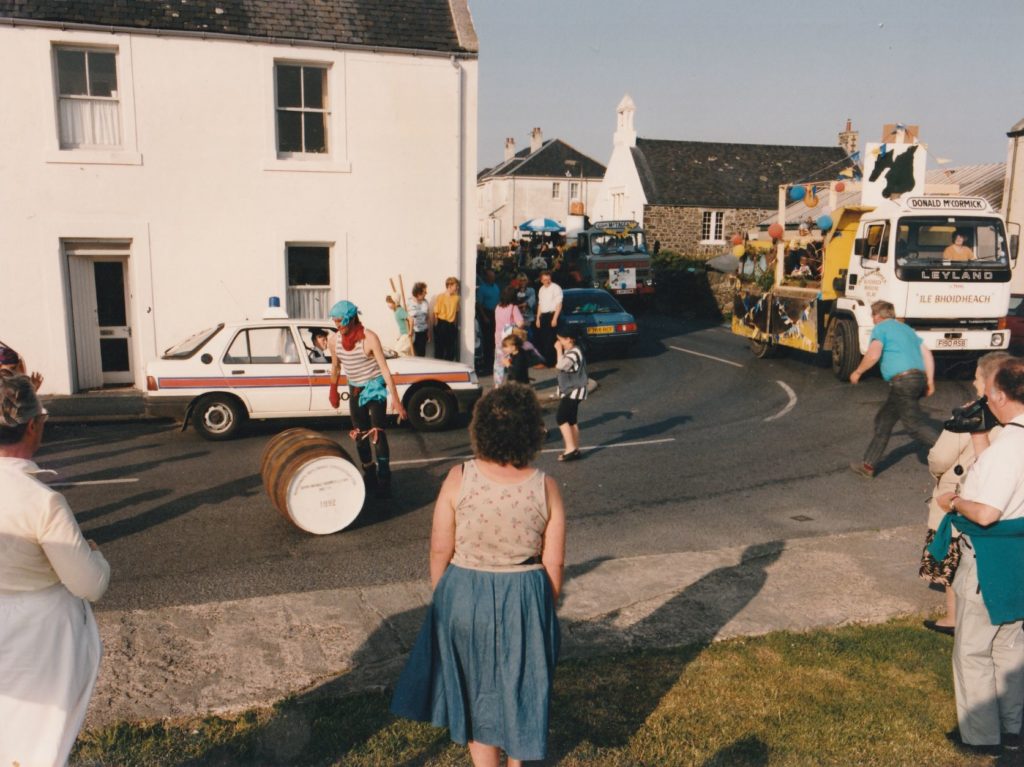After two years of largely ‘virtual’ living we are delighted to be venturing out into the world beyond our laptops and tablets again to embrace live festival experiences. Gavin D Smith reports on how May has grown to become such a huge whisky month in Scotland.
This month sees Scotland’s two leading festivals in the shape of Spirit of Speyside (27 April-2 May) and Islay’s Fèis Ìle (27 May-4 June), book-ending the increasing popular Campbeltown Malts Festival (24-26 May).

The current six-day Spirit of Speyside event has its origins back in 1979, as recalled by Ann Miller, aka ‘The Dram Queen’, who was closely involved in its establishment and is a lifetime ambassador for the festival, spending over 30 years working in the whisky industry.
“In 1997 a tour operator in London suggested Scotland should be promoting its whisky festival, but the fact was there wasn’t one!” says Ann. “So various people, including the forerunner of VisitScotland, started thinking about establishing one. The initial idea was to base it in the Assembly Rooms in Edinburgh, but I said that it should be on Speyside, where we could put on fantastic events.”
Accordingly, the first festival comprised a long weekend in Edinburgh and then a long weekend on Speyside, and as Ann recalls: “We hosted events at Strathisla and Glenlivet. It was a multi-location event and it soon became clear that there were plenty of people on Speyside keen to be involved.
“It was in October 1997, and the time of year wasn’t ideal, as many visitor centres were closing at the end of the tourist season, and it coincided with school holidays, when hotels were already busy. So, we thought, why not go for the start of the season instead? And in May 1999 the Spirit of Speyside Festival began. However, Dufftown had staged its own event in October 1998, and that remained a separate entity for some years.”
The area embraced by the festival gradually expanded from a nucleus around Dufftown, Craigellachie and Aberlour and now spreads from Lossiemouth in the north to Spey distillery at Kingussie in the south.
“Pretty much the whole region is involved,” says Ann, “with 83 different venues and over 550 individual events, and venues ranging from distilleries, maltings, hotels, bars and village halls to a beach hut at Findhorn! Distillery managers, staff members, blenders, coopers, vat-makers and coppersmiths are involved.”
ACROSS TO ISLAY
On Islay, the forerunner of today’s week-long Fèis Ìle started well before Spirit of Speyside, in 1984, when a committee was formed to promote Gaelic language and culture.
The initial festival had very little to do with whisky, partly because at the time, most distilleries were not geared up to play host to members of the public. One former committee member declares that if you contacted a distillery on Islay wanting to look around, the distillery manager might oblige – if he felt like it. The published ‘whisky trail’ for the first festival merely consisted of distillery addresses and phone numbers.
The first dedicated whisky tasting event didn’t take place until 1990. A decade later, with distillery visitor access becoming relatively common, the Islay distilleries became more involved and introduced their individual open days and ultimately their highly sought after Fèis Ìle-exclusive whisky bottlings.
CAMPBELTOWN JOINS IN
The newest of three May Scottish whisky festivals is staged in the old whisky capital of Campbeltown, where the current three distilleries are due to be joined by two new whisky-making ventures in the relatively near future. In terms of dates, Campbeltown fits neatly between the Speyside and Islay festivities, and is also a good geographical fit, as the Argyllshire port is located just over 30 miles from the mainland ferry terminal to Islay at Kennacraig.
The Campbeltown Malts Festival evolved from Springbank distillery’s Open Day, with Glen Scotia distillery manager Iain McAlister explaining that “Springbank’s events were held on the Thursday and Friday in May before the Islay festival started on the Saturday, with tours of Springbank and Glengyle distilleries and tastings. The first tasting I did was in 2014, that was the initial involvement Glen Scotia and I had with it. Springbank kindly invited us to hold it in their Cadenhead shop tasting rooms, as we didn’t have a suitable space at that time. We got a good few people in for it.”
The following year, Iain conducted a dunnage warehouse tasting at Glen Scotia, and in 2016 produced the distillery’s first festival release.
“After that, the whole thing gradually grew and the last ‘live’ festival in 2019 was packed to the rafters. We’ve held two virtual ones since then, and in a short time it has grown into something very special. This year we are expecting a huge increase in numbers, with dunnage warehouse tastings, food pairings, historical walks, live tastings and just a good festival atmosphere, as we always seem to have.”
Whisky festivals represent great opportunities to meet likeminded enthusiasts and distilling ‘insiders,’ while savouring some really special and even unique drams along the way.

